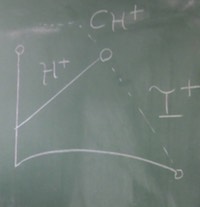Black holes exist as special solutions of general relativity. But do they form from physically admissible initial conditions?
A first answer to this question was provided by the classical paper of Oppenheimer–Snyder from 1939, where it was shown that Schwarzschild black holes form from regular initial conditions in the collapse of a self-gravitating homogeneous dust ball.
The above paper was ahead of its time and its conclusions, when belatedly accepted, formed the basis of our most basic picture of stellar collapse.
Despite this success, however, there is a "dirty secret" which casts a spell on taking seriously conclusions drawn from the dust model: relaxing the assumption of homogeneity, the model allows for the formation of so called "naked singularities" at the centre of symmetry, characterized by the pointwise divergence of the fluid density. In fact, such naked singularities are generic under spherical symmetry for this model, as proven in work of Christodoulou from 1983.
One can hold out hope of course that this failure of cosmic censorship (see here) for the collapse of spherically symmetric dust is the result of having selected too idealised a matter model–not a fundamental aspect of nature. But then, as far as understanding gravitational collapse is concerned, one can argue that the original success of the Oppenheimer–Snyder model is irreconcilably tainted, and this brings us back to square one! It is clear that to have a truly convincing understanding of gravitational collapse which is not vulnerable to the above criticism, one must study gravitational collapse of pure vacuum.
Thus, it has been a fundamental question to understand:
Can black holes form from the vacuum collapse of arbitrarily dispersed pure gravitational waves?
The above question has been answered in the affirmative in monumental recent work of Demetrios Christodoulou, the proof forming the monograph below:
Demetrios Christodoulou, The Formation of Black Holes in General Relativity, (monograph, 589 pp.), EMS Monographs in Mathematics, EMS Publishing House (ISBN 978- 3-03719-068-5), 2009.
Together with Igor Rodnianski, I organised a "Hot topics" workshop at MSRI in September 2009, centred around the above work, which included four lectures by Christodoulou. All lectures from the workshop are available on-line following this link.
I have also given an exposé on the above work of Christodoulou at the Séminaire Bourbaki:
The formation of black holes in General Relativity [after D. Christodoulou], Astérisque 352 (2013), Exp. No. 1051, viii, 243–313
